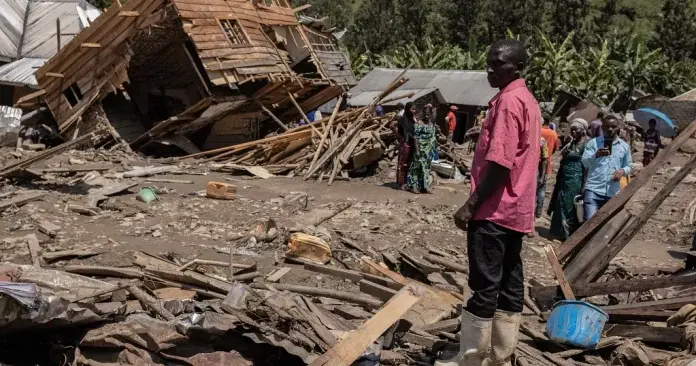- P.O. Box: 11482 Yaoundé, Cameroon; Headquarters: Efoulan, Yaoundé 3
- contact@caessinternational.org

At the foot of the lush hills of the Kalehe territory on the western shore of Lake Kivu, bordering Rwanda, a desolate landscape of mud and stones has taken over an entire neighborhood. There once stood residential homes, a market, two schools, a health center, a multipurpose hall, and a warehouse. Nothing remains. On Thursday evening, following heavy rainfall, the Nyamukubi and Chishova rivers overflowed, sweeping away everything in their path. Indeed, after intense rains on May 2nd and 4th in Luzira, Bushushu, Chabondo, and Nyamukubi within Kalehe territory in South Kivu, several villages were submerged, many houses destroyed, and fields devastated as rivers burst their banks due to torrential downpours, resulting in over 400 deaths.
According to the United Nations Office for the Coordination of Humanitarian Affairs (OCHA), nearly 3,000 families have been left homeless due to floods and landslides in the Kalehe territory. The affected area is also a zone that has hosted thousands of displaced people, notably from North Kivu. OCHA reports that more than 107,000 internally displaced persons are in the Kalehe health zone.
In the urgent response efforts, more than 200 bodies (among the first 400 victims recorded) were reportedly wrapped in bags or sheets and buried in one or several mass graves. This treatment has been deemed scandalous by the Congolese population, who demand “a dignified burial for their deceased compatriots in Kalehe.”
This natural disaster calls on African states to assess their capacity for disaster prevention. Likewise, it urges authorities to establish effective early warning systems and serious evacuation protocols for at-risk areas. It is therefore time for meteorological services to fully play their role in sparing African populations from such tragedies.